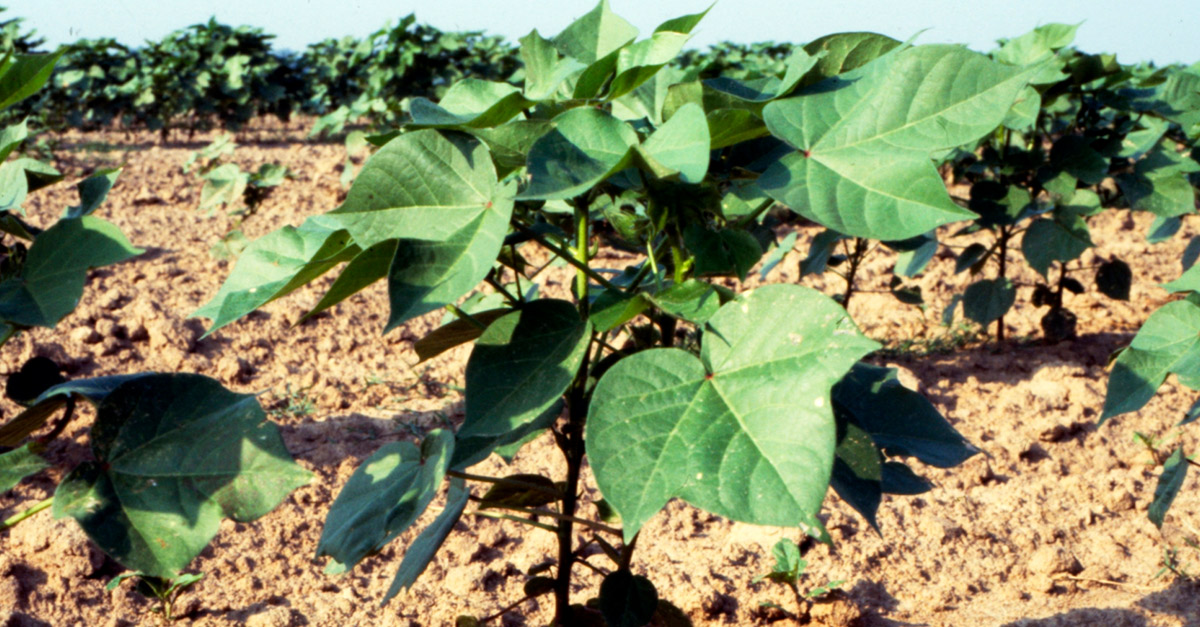Putting Plant Health Strategies to Work in the Field
In some parts of the Cotton Belt, planting for the 2021 crop may be complete, in progress or still waiting to begin. Regardless of where you are in the planting cycle, it’s important to keep in mind that the first 40 days after planting can often be make or break time for a healthy crop.
“A lot of activity completed earlier in the season should help carry us through the May window,” said Tyson Raper, University of Tennessee Extension Cotton Specialist. “Hopefully we planted high quality seed in a warm seed bed and got good seed/soil contact. We wanted to make sure we managed thrips so they didn’t cause too much stress to the seedling and, if we did have thrips in the field, that we treated those when the first true leaf emerged.”
At this point, Raper shifts his focus toward fertility with a primary focus on two nutrients – nitrogen and sulfur.
“When I think about plant health, I’m really focused on fertility and making sure I’ve got nitrogen out there and available to support adequate vegetative growth to hopefully support very profitable reproductive growth later in the year,” he noted.
For nitrogen, he suggests applying a sidedress application via broadcast, most likely in early June around pinhead square but definitely before first bloom.
Sulfur is a bit trickier.
As Raper explained, sulfur is a relatively recent concern. Ten to 20 years ago, anywhere from 15 to 25 pounds of sulfur was provided each year through atmospheric deposition. But newer environmental policies mandating things such as low sulfur diesel and more scrubbing of manufacturing plants have pulled more sulfur out of the atmosphere and, consequently, out of fields. That’s led to sulfur deficiencies becoming more common and increased reliance on sulfur fertilizer.
“The timing for sulfur fertilizer, in my opinion, really needs to be around planting,” he said. “I’d like to have ammonium sulfate out to provide nitrogen to that young plant early but also provide a source of sulfate, which is the plant available form of sulfur.”
Elemental sulfur remains an option, but Raper cautions that it takes a considerable amount of time to break down to become usable, plant available sulfur. It’s something that’s hard to model and hard to predict.
“A lot of times when we see sulfur deficiencies, it’s in the pinhead square/matchhead square window leading up to early flower,” he said. “The reason is that sulfur often gets tied up in organic matter. In cool, wet soils like we typically see in the Mid-South during that window, we won’t see sulfur break down, so plants will show some signs of deficiency.”
Other Things to Consider
There’s been some interest and study regarding the value of early season applications of fungicides in cotton. Raper explained that cotton specialists across the country recently completed work to reevaluate early season fungicide application. It remains an option, but the group was not able to capture a benefit for that timing.
Raper also pointed out that growers should be thinking about managing plant growth and helping those young plants transition into reproductive growth with adequate – but not excessive – vegetative growth.
“If we missed on our nitrogen rate or overapplied with a really aggressive variety on a deep silt loam soil, we definitely need to be thinking about how we’re slowly going to introduce a PGR into the system at an adequate enough rate to where we don’t see excessive growth later in the year.”
Dryland Considerations
Following the disastrous growing conditions across most of west Texas in 2020 – and with drought still in the picture as the 2021 season begins – dryland cotton growers may still find themselves looking for ways to control input costs. In some cases, fertilizer that may have been applied as far back as 2019 may still be present in some fields.
The question, said Kerry Siders, Texas A&M AgriLife Extension Agent-IPM for Hockley, Cochran and Lamb Counties, TX, is are the nutrients still where growers need them to be and can growers afford to add to it?
“Most of our dryland producers often gamble to the point where they’re a little more proactive and at least put some starter fertilizer out,” he explained. “If they can find a good price, they should be able to put out a good starter kit for the top six inches that the cotton plant will benefit from in the short term.
“A lot of times when we do react with fertilizer, we’re too slow to react,” he added. “We wait for rain and then go out and sling some fertilizer, and it may already be too late.”
Siders recommends soil sampling to find out what nutrients – and how much of each – are present in the top foot of soil. Forty units is more than sufficient to produce a bale. But if any nutrients are below 20 inches, it’ll be a while before a cotton plant gets to it, if at all.
“Growers should pick a number they can afford,” said Siders. “Maybe somewhere between 10 and 30 units.”









